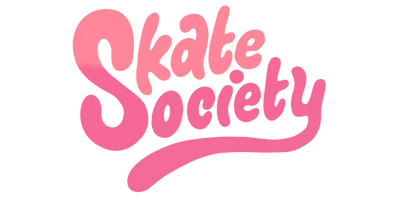Your Cart is Empty
Menu
-
- Roller Skates
- Inline Skates
- Skateboards
- Scooters
- Protective Gear
- Maintenance
- Apparel
- Kids
- Brands
- 187
- American Socks
- Anarchy
- Antik
- Arbor
- Atom Skates
- Bionic
- Blind
- Bones
- Bont
- Chaya
- Crisp
- Crazy Skates
- Ennui
- Epic
- FR Skates
- Globe
- Impala
- MADMIA
- Mota
- Moxi
- NeoMorph
- Penny
- Playlife
- Powell Peralta
- Powerslide
- Pro-tec
- Razors
- RDS
- Remz
- Riedell
- Rio
- Rollerblade
- Rollerbones
- S1
- Santa Cruz
- Seba
- SFR
- Sisu
- Smith Scabs
- SureGrip
- Triple 8
- TSG
- USD
- WIFA
- Z-flex
- Clearance
-
- 61 8 8431 2792
- Login
- AUD

Fitting your inline skates properly
February 16, 2018 4 min read
How do i get the right fit?
This can be quite an art to get right. We all have individually shaped feet so one pair does not fit all. Take your time here, it’s a real pain in the foot to get a pair of skates that just don’t fit.
Feet swell during exercise so its best to measure your foot or try on skates in the afternoon or after some exercise. If you have the luxury of being able to come into the shop, try parking a bit further away and take a brisk walk to us so your feet the size they are going to be when you are actually skating.
When you try on a pair of skates, try your own shoe size (and not the size bigger, as some other skate shop assistants may suggest). Wear a thin pair of socks and put both skates on as most people have one foot bigger than the other. Tie up the laces and/or heel clasps reasonably tight without being too tight. You should just about be able to insert a finger down the back of the skate when done up. Then the top ratchet strap. This should to be tight enough for you to bend your knees and then feel supported by the strap. If they’re too tight the straps will stop you bending your knees and cut off blood to your foot. Too loose, and your knees will never make contact with the strap when you bend them. You need to make sure your heel is all the way into the back of the skate so tap the back wheels hard into the floor to get your heels into the back of the boot as much as you can.
Stand up with both feet parallel, hip width apart (Ready Position), and bend your knees so when you look down your knees are just over the boots. In this position, your shin bone is supported by the front of the boot. Now wiggle your toes. Do they rub against the toe box? If so try on slightly larger skates. If there is wiggle room? If so try on a slightly smaller pair of skates to make sure they are the best fit.
Flex your knees and move your ankles in as much circular movements as you can and focus on your feet and how they feel.
Mild ‘pins and needles’ may be normal after a little while. Remember your feet are not used to wearing skates yet. However if your circulation gets cut off quickly you may need a larger size or it might be that the strap is too tight so adjust and try again.
A skate may seem more comfortable if it is too big. However when you move your feet you want the movement to translate into the boot. You do not want your foot to be sloshing around like your wearing clown shoes. If skates are too big you can experience pain around the inner arch of the foot and around the ankles.
Wear your new skates on the sofa while you are watching your favourite show for a few weeks. About 20-30minutes a day. Your family/partner may think you've lost your mind but this will help your circulation and get your feet used to being in skates.
What if it still hurts to skate even though they were the right size
When you first start skating you may experience a bit of pain usually pins and needles or muscle cramps even if your skates are the right size. Usually it’s simply because you’re using muscles that you have never used before and thay are getting tired quickly. The best remedy for this is simply to take those skates off for a few minutes and give those toes a good rub. In a short time your muscles will strengthen and the pain will lessen.
Stress and tension, (let’s face it you’re pretty stressed with wheels bolted to your feet aren’t you?) can also cause muscle cramps. Try to relax as best you can, bend your knees and breathe. Skating is not just about using the right muscles, it’s also about turning off the wrong ones. Don’t persevere through the pain. Take your skates off for a while.
Bad skating technique will pull and squeeze all the wrong muscles not only in your feet but in your back, neck and shoulders too. A big part of my job here at Skatescool and in Roller Derby is spent looking at posture, balance and technique to make things come together. Practicing your technique and posture as well as getting more fluent with your skating will come in time and so will the muscles.
Some other things that might help is taking your skates to a podiatrist or to get an insole. some pain may be caused by your arch not being supported and the foot leaning in and sometimes a heel wedge can alleviate pain in other areas. There is no one rule for everyone as we are all different. Skating muscles are very different from those used in our everyday lives so strengthening those muscles if you go to the gym is also beneficial. Some gyms even offer PT's that can watch your movements on a video even and suggest workouts for you so give this a try too!
What’s the difference between different kinds of skates?
Inline skates fall into 4 main categories, Recreational, Speed, Aggressive and Hockey skates.
Recreational skates are for all purpose park skating, street skating and fitness skating. They have 4 wheels, a heel brake on one skate and many different styles and models. This is probably the type of skate you want if you are a beginner and not yet specializing in any of the following forms of skating.
Speed Skates have 5 wheels (or a longer than usual 4 wheel frame), larger wheels and no heel brake. They can have lower cuffs for lightness and increased flexibility.
Aggressive skates are very heavy with a short wheel and tiny thick wheels base to be very stable in jumps and tricks. They have a ‘grind plate’ for sliding and performing tricks. They have no heel brake and are not designed for any speed.
Hockey skates have a short wheel base for manoeuvrability and no heel brake. They have a harder boot with little padding to withstand impacts.
